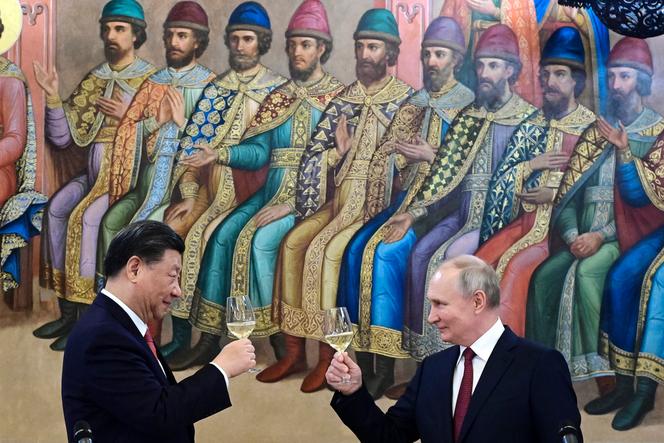


On his first foreign trip since his inauguration for a fifth term in the Kremlin, Vladimir Putin is visiting China on Thursday, May 16, and Friday, May 17, in what will be a closely scrutinized trip. The state visit comes in response to the trip made to Moscow by Chinese President Xi Jinping in March 2023 and marks the 75th anniversary of the establishment of diplomatic relations between the two countries. In addition to Beijing, Putin will visit Harbin, in the Heilongjiang province of northeast China.
Despite the almost routine nature of meetings between the Russian and Chinese presidents, who see each other at least three times a year in multilateral settings (G20, BRICS and Shanghai Cooperation Organization summits), this trip has some unique characteristics. For the Russian side, it will be a test of the limits of a friendship that was declared in February 2022, 20 days before the invasion of Ukraine, to be "no-limits."
The ever-closer alignment between the two capitals is "one of the most important geopolitical consequences of the war in Ukraine," wrote a Russian specialist of China, Alexander Gabuev, in Foreign Affairs, in early April. Whether or not this relationship deepens could depend not only on the fate of the Ukrainian conflict, but also on the solidity of the anti-Western axis constructed between Beijing and Moscow.
Putin, who likes to use trade figures on his travels to demonstrate the strength of relations, can take comfort in the fact that trade between his country and China has risen sharply. In 2023, it reached $240 billion (€221 billion) – a meteoric rise from $147 billion in 2021. Significantly, the figure has crossed the $200 billion mark which Xi and Putin had set as their target for 2025.
The key sectors of this relationship are well known: raw materials and energy for the most part on the Russian side; manufactured and industrial goods on the Chinese side. Chinese carmakers now account for more than half of the Russian automotive market. And Russia has become China's leading supplier of gas – sold at a discount.
The trend is all the more pronounced given that Russia's "Asian pivot" dates back to 2014, in the wake of the annexation of Crimea and the first Western sanctions that ensued. From 2022 onwards, however, it has intensified. This ideological choice, a clear rejection of the West, has now become an economic necessity for Moscow.
Not only has Russia gradually found itself deprived of other outlets, particularly for its oil and gas exports, but Chinese companies are now an indispensable player in compensating for or circumventing the new sanctions imposed by the West. In mid-March, the Moscow Times revealed how Beijing had helped send €580 million worth of European equipment for the gigantic Arctic LNG 2 gas project, from which the French company TotalEnergies has stepped back.
You have 70.75% of this article left to read. The rest is for subscribers only.
